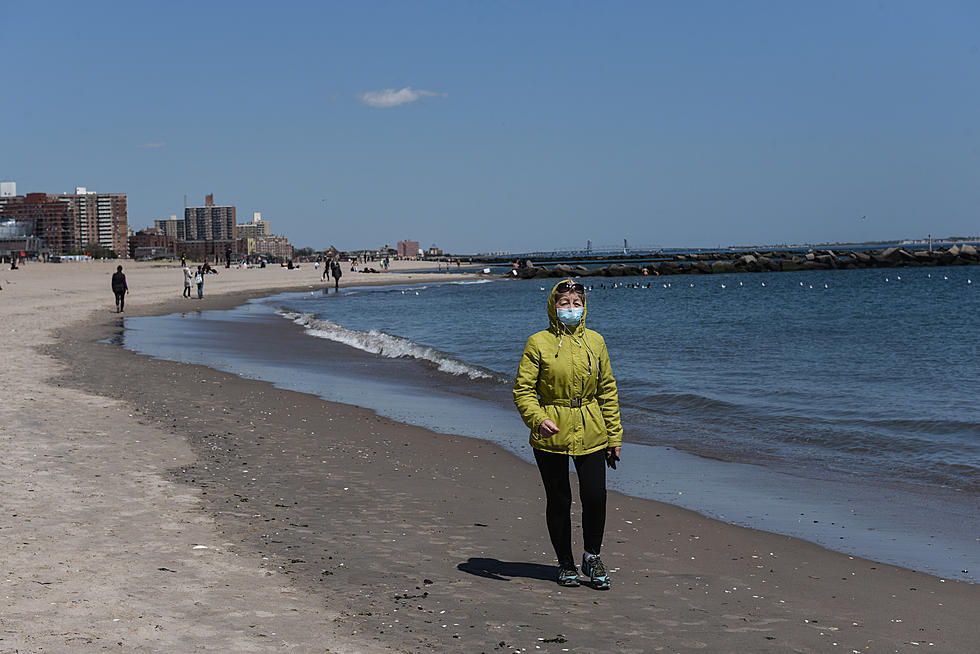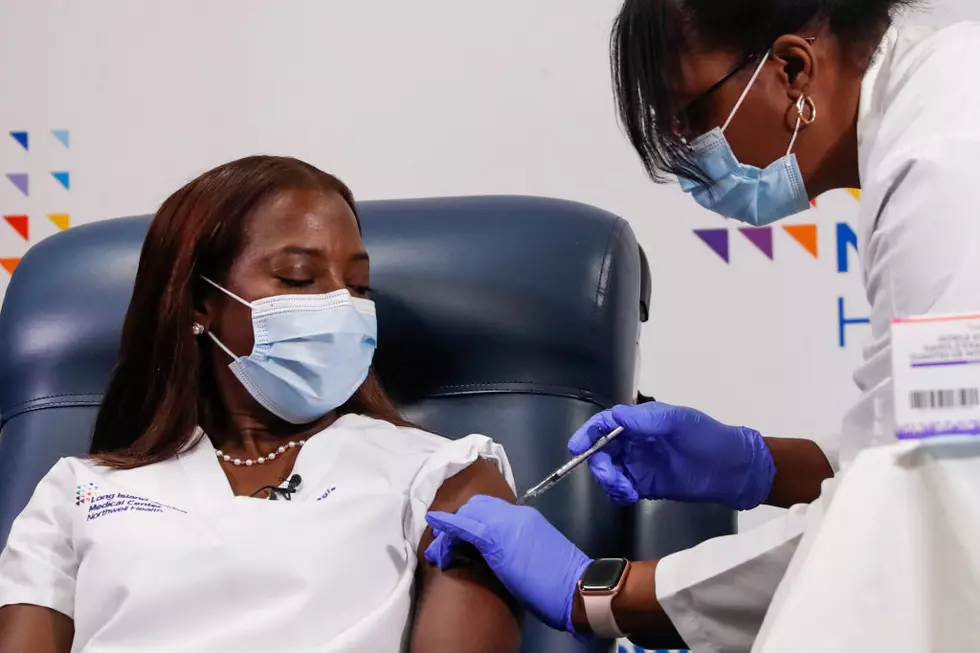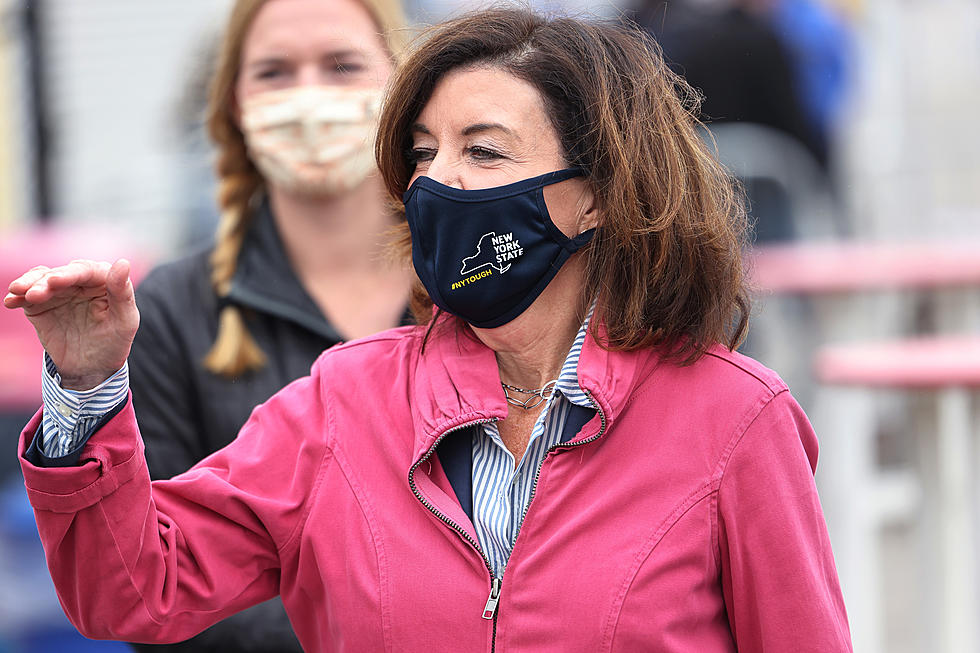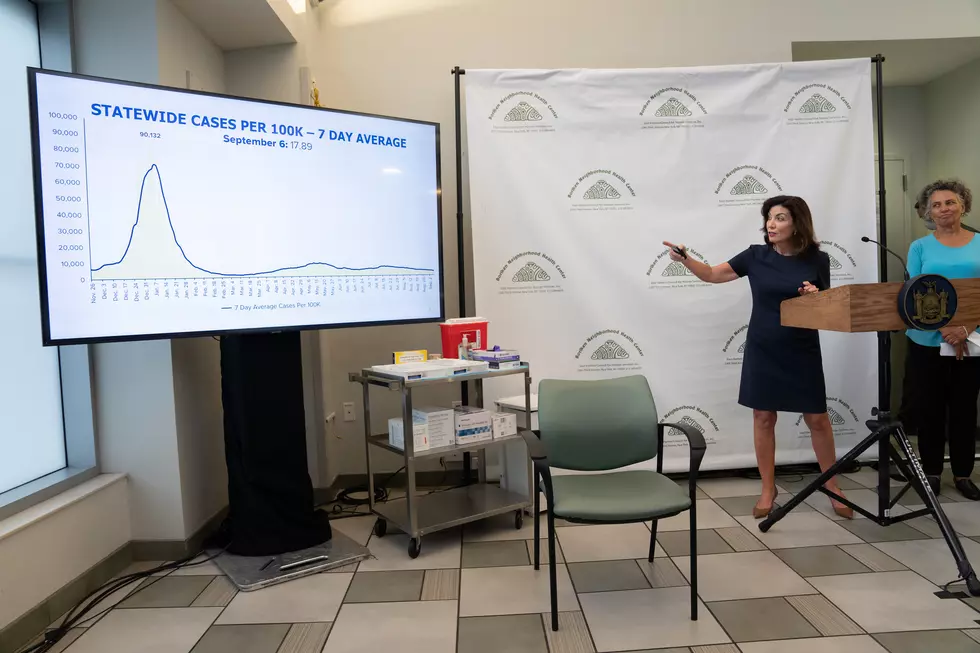
New COVID-19 Guidelines For New Yorkers at Beaches, Lakes
New York officials released a number of new guidelines you must follow at a lake, ocean or beach.

Enter your number to get our free mobile app
Physical Distancing
- The maximum facility capacity must be reduced to 50% of a normal summer season capacity.
- Capacity in indoor areas (e.g. changing areas, equipment sheds, locker rooms, restrooms) must be reduced to no more than 50% of the maximum occupancy for a particular area as set by the certificate of occupancy, unless it is designed for a single occupant or additional personal protective measures are implemented (e.g. face coverings at all times).
- To reduce interpersonal contact and congregation among people who are not members of the same household/family unit, establish a Site Safety Plan, which includes a density reduction component, incorporating this guidance and all applicable Centers for Disease Control and Prevention (CDC) and DOH COVID-19 guidance. The plan must include:
- Appropriate site-specific physical distancing and cleaning criteria and other best practices consistent with this guidance.
- Adequate staffing guidelines to reinforce social distancing and proper hygiene and deter crowding, group activities (e.g. beach volleyball, football) and large gatherings.
- Public outreach campaign to reinforce capacity limitations, social distancing, and sanitization protocols.
- Except for members of the same household/family unit, ensure 6 ft. distance between individuals, including employees and members of the public, unless safety or core function of a work activity requires a shorter distance (e.g. providing emergency assistance to a beachgoer).
- Ensure 10 ft. of distance between beach blankets and chairs, except for members of the same household/family unit.
- Any time individuals are less than 6 ft. apart from one another, they must wear acceptable face coverings.
- Post social distancing markers (e.g. tape, flags in the sand) that denote 6 ft. of spacing in high-traffic areas (e.g. restroom lines, ticket lines).
- Limit in-person gatherings as much as possible. Essential in-person gatherings (e.g. staff meetings) should be held in open, well-ventilated spaces with appropriate social distancing among participants.
- No gatherings of any size are allowed, except for groups from within the same household/family unit.
- Restrooms must undergo frequent cleaning measures in place; indoor showers, pavilions, playgrounds, swimming pools (subject to further guidance) must be closed. Drinking fountains may remain open if a touchless activation system or foot pedal is installed.
- Amusement parks, as well as arcades and other places of public amusement, located on beaches, boardwalks, and lakes must remain closed until further notice.
- Except in an emergency, the congregation, beaching, or tying together of multiple vessels (e.g. kayaks, canoes, rowboats) within a facility is prohibited to avoid group gatherings. Vessels may be beached and/or tied together for storage, without any persons using them.
- Organized or “pick-up” sports, leagues, and contact activities; special events, festivals, concerts, fireworks, and movies are not permitted. Concessions businesses, food/beverage sales via concession or restaurant vendors, and rental activity (e.g. chairs, lounges) are prohibited.
Protective Equipment
- Employers must provide employees with an acceptable face covering at no-cost to the employee and have an adequate supply of coverings in case of replacement. Lifeguards/water safety personnel must wear a face covering when on patrol and interacting within 6 ft. of coworkers or members of the public, except when performing lifesaving or emergency response activities.
- Acceptable face coverings include but are not limited to cloth (e.g. homemade sewn, quick cut, bandana) and surgical masks, unless the nature of the work requires stricter PPE (e.g. N95 respirator, face shield).
- Face coverings must be cleaned or replaced after use or when damaged or soiled, may not be shared, and should be properly stored or discarded.
- Limit the sharing of objects (e.g. tools, towels, vehicles) and discourage touching of shared surfaces; or, when in contact with shared objects or frequently touched areas, wear gloves (trade-appropriate or medical); or, sanitize or wash hands before and after contact.
Hygiene and Cleaning
- Adhere to hygiene and sanitation requirements from the Centers for Disease Control and Prevention (CDC) and New York State Department of Health (DOH) and maintain cleaning logs on site that document date, time, and scope of cleaning.
- Ensure lifeguards and water safety personnel comply with DOH standards and guidance relating to COVID-19.
- Provide and maintain hand hygiene stations on site, including handwashing with soap, water, and paper towels, as well as an alcohol-based hand sanitizer containing 60% or more alcohol for areas where handwashing is not available or practical.
- Provide and encourage employees to use cleaning/ disinfecting supplies before and after use of shared and frequently touched surfaces, followed by hand hygiene.
- If cleaning or disinfection products or the act of cleaning and disinfecting causes safety hazards or degrades the material or machinery, personnel should have access to a hand hygiene station between use and/or be supplied with disposable gloves.
- Conduct regular cleaning and disinfection of high-touch areas at appropriate intervals in accordance with CDC and DOH guidelines, particularly in spaces that are accessible to staff, the public, or other individuals, including, but not limited to: restroom facilities, lifeguard stands or towers, gates, ticket or sales booths, shower pedestals, counter tops, sinks, door knobs, and other frequently touched surfaces.
- All sanitary facilities (e.g. changing rooms, locker rooms, outdoor showers, restrooms) must be cleaned and disinfected at least three times daily with emphasis on frequent enhanced cleaning of "high touch" surfaces and high use spaces. Regularly stock them with hand washing supplies and sanitizer.
- Cleaning and disinfecting of facilities, shared surfaces, and other areas, as well as equipment and tools, should be performed using Department of Environmental Conservation (DEC) products identified by the Environmental Protection Agency (EPA) as effective against COVID-19.
- Except in cases involving the same household, no beach or swimming equipment may be shared, unless it has been cleaned and disinfected between users.
- Prohibit shared food and beverages (e.g. buffet-style meals) among employees.
Communication
- Affirm you have reviewed and understand the state-issued industry guidelines, and that you will implement them.
- Post signage throughout parking areas, ticketing stations, entrances, and congregate-use facilities to remind patrons and employees to adhere to proper hygiene, social distancing rules, appropriate use of PPE, and cleaning and disinfecting protocols.
- Develop a public outreach campaign for the safety and density reduction plan, through measures such as signage, social media, websites, or radio.
- Lifeguards must be trained to enforce beach social distancing and crowd control.
- Establish a communication plan for employees and visitors, with a consistent means to provide updated information.
Screening
- If a worker tests positive for COVID-19, employer must immediately notify state and local health departments and cooperate with contact tracing efforts, including notification of potential contacts, such as workers or visitors who had close contact with the individual, while maintaining confidentiality required by state and federal law and regulations.
- Have available completed safety plans on site Although beaches are open, patrons must abide by guidelines:
- Be prepared. Bring an acceptable face covering to wear within 6 ft. of people outside your household/family unit and soap/sanitizer and pack out all trash.
- Maintain a physical distance of 6 ft. or more and avoid gatherings of any kind, except among members of the same household/family unit. Large gatherings, picnics, and beach parties are not allowed. Visitors will be asked to leave if there are too many people at the beach or on trails to allow for the required physical distance.
- Individual or family ocean activities (e.g. surfing, swimming, kayaking, paddle boarding, body surfing), running, or walking on the sand are allowed.
- Employees who are sick should stay home or return to home if they become ill at work.
- Implement mandatory health screening assessment (e.g. questionnaire, temperature check) before employees begin work each day, asking about (1) COVID-19 symptoms in past 14 days, (2) positive COVID19 test in past 14 days, and/or (3) close contact with confirmed or suspected COVID-19 case in past 14 days. Assessment responses must be reviewed every day and such review must be documented.
- Employees who present with COVID-19 symptoms should be sent home to contact their health care provider for medical assessment and COVID-19 testing. If tested positive, employee may only return completing a 14-day quarantine.
- Employees who present with no symptoms but have tested positive in past 14 days may only return to work after completing a 14-day quarantine.
- Employees who have had close contact with a confirmed or suspected person with COVID-19 but are not experiencing any symptoms should inform their employer and may be able to work with additional precautions, including regular monitoring for symptoms and temperature, required face covering all times, and appropriate social distancing from others.
- On-site screeners should be trained by employer identified individuals familiar with CDC, DOH, and OSHA protocols and wear appropriate PPE, including at a minimum, a face covering.
- Patrons cannot be mandated to complete a health screen or provide contact information but may be encouraged to do so. Patrons may be given the option to provide contact information so they can be logged and contacted for contact tracing, if necessary.
- Have a plan for cleaning, disinfection, and contact tracing in the event of a positive case.
New Rules For NY Bars, Restaurants Tops This Week's Hudson Valley News
More From 94.3 Lite FM









